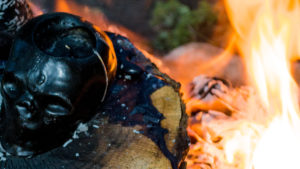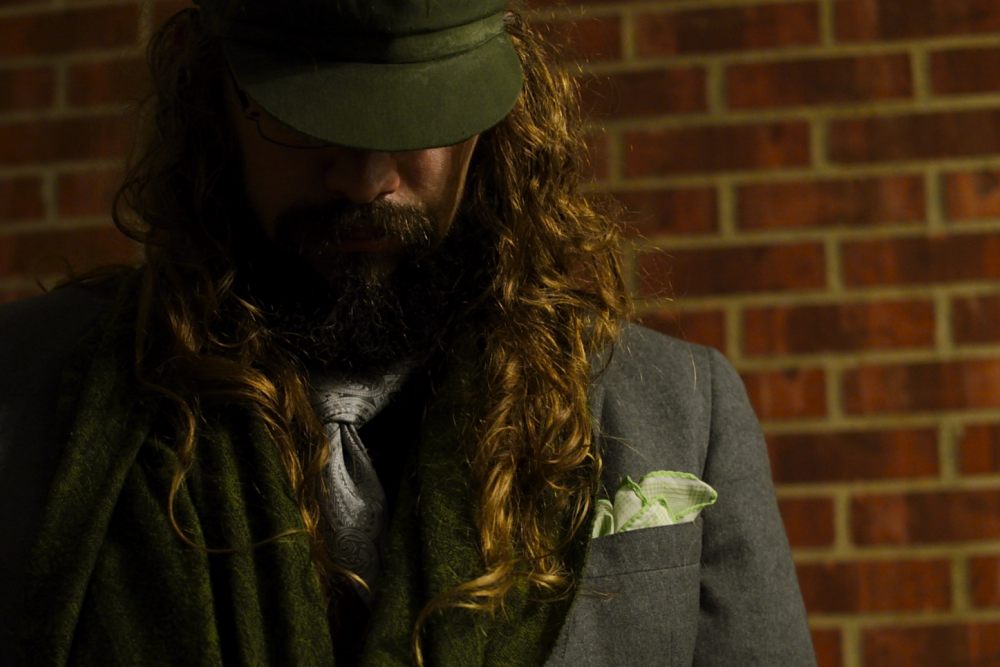A few days after Samhain I will be thirty-six years old and, give or take a few months, I will have been practicing magic for twenty years.
My studies started a few years earlier, when I was thirteen. Astrology books. Chariots of the Gods. But I didn’t dive in. Not right away. I think it was my sixteenth birthday when I bought my first Tarot deck and my copy of the Necronomicon, and not long before or after that when started trowling internet message boards and archives for non-theistic magical techniques. But, then as now, my first and best resource was the people around me: empaths and energy workers who taught me things I’ve never, rarely, or only recently seen in books or even blogs. I’ve told this story – all these stories – before, I’m sure; in bits and pieces, at least.
Elemental energy and crystals in the halls of Lawrence Free State High School. Dragons and dragon-kin in the coffee shops Downtown. The realms of the dead and otherworldly lights in cemetaries and along the railroad tracks. Circle-casting and Ouija and aura-reading and my first group circles with the KU Wicca-Pagan Alliance. My first adventures at Heartland Pagan Festival, as early as 1999. My first shamanic visionary experiments in St.Louis, and my first attempts to reach out ot the gods. Past lives and glossolia and love and lust and loss.
In some ways, though, I feel like I’m behind my peers. I cant pretend that I was practicing dilligently that enitre time, or that my experiments were always well thought-out. Others who started their practices around the same time have published books and are running classes and conferences. Some have even established enire schools of thought.
In retrospect, I wish that I had been bolder. I knew, even at the beginning, that things could get so much stranger than they already were, and the fact of the matter is that I was afraid. One of my earliest compatriots came from a New Age family whose matriarch was hard for the White Light, and savagely against anything with the slightest risk of a neutral spirit encounter, let alone a potentially complicated or unsettling one. Her fear, transmitted through my friend, combined with my own native sheepishness – prior to begining my magical practice, I had been a downright boring kid, however strange I might have been – to severely limit my explorations at the earliest stages. Later, when I joined the WPA, my trunkated explorations were still the strangest thing most of my peers had ever seen, and I felt no need to push forward in that context. All in all, I missed the prime exploratory years wherein youthful ignorance and madness overlapped with near-adult intellect and ambition.
I won’t be behind the power curve forever, though. I’ve spent the last few years really stepping up. My first, ill-fated student in 2008, when I first came bacck to KC after my failed life in St. Louis. The Proto-Coven, shortly after, with Aradia and Chirotus and D and Pasiphae and Aidan. The Ceremonial Experiment and those first workshops from the Sunrise Temple. My work with the Heartland Spiritual Alliance since graduating college and coming back to KC – I’ve learned so much from my work with the Sacred Experience Committee already, and I’ve easily got another year or two in me before that burns me out.
I’ve started teaching workshops on spirit conjuration at Heartland Pagan Festival and Spirit Circle, hoping to spread that skill wider in the local Pagan community. And then there are the masks. Those experiments have barely begun, and I have no idea where they will take me, but … I know that something really, trully exciting waits down that road. The Nine Muses multi-mask (which I still haven’t written about) at Festival this May really proved that.
It’s been a hell of a ride. A good life, even. I feel like I’ve forgotten more magical techniques than some people will ever know. This is a tragedy, not braggadocio. As I wind up my most recent Back-to-Basics programme, reading Andrieh Vitimus’ Hands On Chaos Magic (possibly the best single-volume magical handbook I have ever seen) and cruising through the archives of Deeper Down the Rabbit Hole and Aeon Byte and a handfull of other podcasts (for some reason, podcasts are easier on my madness, lately), I keep having the surreal experience of, “Oh, yeah! I used to do that! Why did I stop?”
Looking back on it all, it is natural for any human brain — let alone that of a novellist — to try to extract some sort of narrative or lesson.
I was “raised”, so to speak, in the heyday of solitary ecclectic Wicca, and somehow missed Chaos Magick on the first pass. I have watched magical but ahistorical Paganism wane, somewhat, in the face of more academically savvy but often explicitly anti-magical reconstructionist and devotional polytheisms. I have watched, albeit from a bit of a distance, the rise of the grimoir revival and an apparent resurgance of lodges, orders, and covens.
When I started, American Pagans, under the lingering influence of Second Wave feminism, were often clueless in regard to issues of race and class, and ill-equipped to deal with queer genders and sexualities, but in general were well-intended and willing to listen and change. Over the last two decades, though, a strong split has risen between those inclined to justince across racial, class, gender, and sexual lines, and those who allign themselves, either actively or by inaction, with the White Nationalist resurgance in both the United States and Europe. And with the rise of the “Alt” Right (that is, the “new” trend of disdaining dog whistles in favor of being openly evil), those whose chief politics are respectability are rushing swiftly towards the Nazis.
I am still young. My political awakening has been relatively recent. And the politics and history of the last hundred years is a mess of classified, redacted, and falsified documents. I’m honestly not 100% sure what happened. My inclination is to say that, after having already taken a hard body-blow from the Satanic Panic of the 1980s, the 9|11-inspired resurgeance of Christian Nationalism and the resulting death of the Anti-War and Environmental movements created an environment in which the best parts of Modern Neo-Pagan Witchcraft and Religion were severely hobbled, and the worst parts (which were always there) were given fertile fields in which to grow.
Fuck.
Twenty years. Magic and, by extension, Paganism have been the center of my life for twenty years. Way more than my “adult” life. Twenty years of power and ecstacy and madness and love and lust and tears and visions. Even when I was not actively practicing, when I was lost in depression and anxiety or the chaos of mortal life, my life was defined by magic and/or the lack thereof.
The only thing I’ve been doing longer, the only thing that means as much to me, is writing. Did I know what I was getting into when I started? Of course not. Would I have done it if I did? I like to think so.
Twenty years, now. Four cities across three states. Three hard resets of my practice and cosmology. More friends gained and lost and more psychoctic breaks than I can count.
Thank you, all of you, who have been here with me on the road for any amount of time.
Thank you, even more, to those whose paths took you far away. I miss you more than I can say, even if some of you would not be prepared for my new genderqueer polyamorous marginal life.
Let’s rais a glass, friends, to twenty years of magic. And swill it down to the promise of at least twice twenty more.







